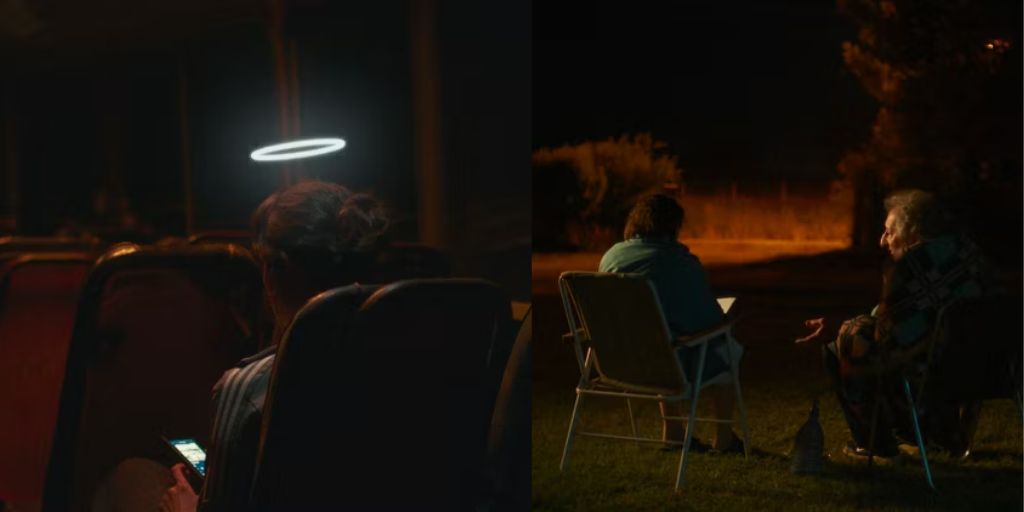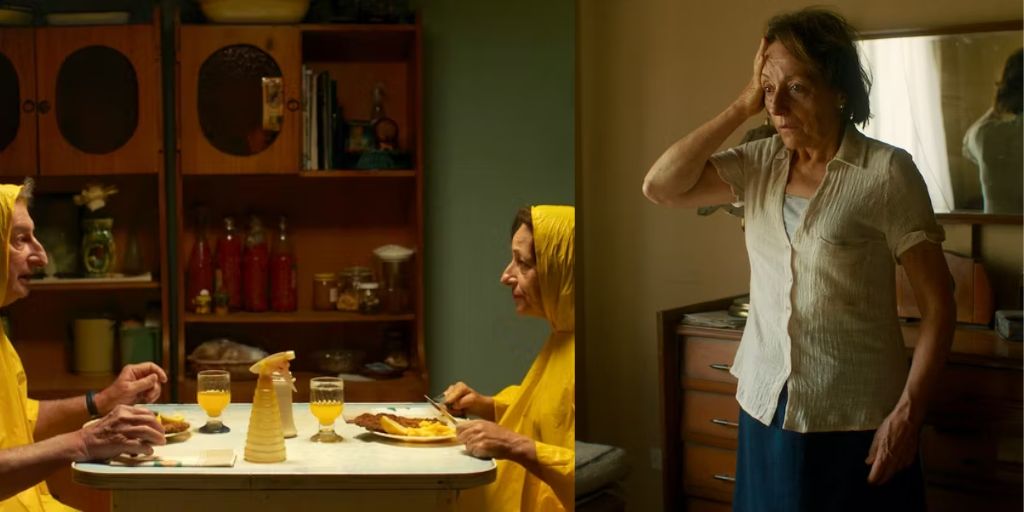In Chronicles of a Wandering Saint, the debut film from writer-director Tomás Gómez Bustillo, there’s a moment early on that feels like the story is about to end. The credits begin to roll, and the character we’ve followed in the opening act seems to reach her conclusion.
The exact nature of this is best discovered by watching the film, but what’s clear is that it shifts the pace of the story and brings new energy to the film. Unlike other films that feature late title card sequences, this one finds joy in letting the credits roll entirely.
The film starts afresh, featuring one of the best musical choices of recent times, giving the impression that a brand new story is beginning.
Initially, the film feels like a calmer version of something like the Los Espookys series, a beloved piece of art that ended too soon. However, Chronicles of a Wandering Saint soon expands into something more imaginative and playful. It transforms into a more whimsical yet heartfelt vision that borders on the absurd at times.
This shift is too fun to give away in detail, but the movie plunges into an offbeat, often humorous, and melancholic journey.
The film captures the essence of life in beautifully shot scenes that focus on small, everyday details that become meaningful when seen closely. Although the journey might feel slow at first, it becomes more powerful as all the elements are revealed.
A second viewing makes it clear that these small moments—such as a woman trying to create a “miracle” in her seemingly ordinary life—lay the groundwork for the true wonder to come. The film evolves into something reminiscent of the works of Apichatpong Weerasethakul, but with its own unique meanings and humor.
The exploration of mortality is gentle and reflective. The film, much like life itself, asks for patience and attention to see the beauty that lies underneath. That beauty sometimes requires a little extra effort to uncover, much like the hidden joys in our own lives.
What Is ‘Chronicles of a Wandering Saint’ About?
The film introduces us to Rita, portrayed by the talented Mónica Villa. Rita is praying alone in a rural Argentine village church, bathed in sunlight, giving her a saintlike appearance. This framing, created by cinematographer Pablo Lozano, is intentional.
As the light shifts, so does Rita, humorously adjusting her position. This small movement tells us much about her character. Rita is a devout woman, deeply committed to her faith, but she also seeks to stand apart from her community and humanity itself, striving for a special kind of recognition.
Rita soon embarks on a plan to convince her small village that she is extraordinary. She discovers a statue in the church’s storeroom and decides to present it as the long-lost effigy of Saint Rita. It’s not, but as many good films have shown, sometimes a miracle requires a little bending of the truth.

Rita enlists the help of her kind but dull husband, Norberto, played by Horacio Marassi. Together, they sneak the statue out of the church so that Rita can return it later in a more polished and impressive form, ready to convince her community.
Through these moments, we see that their relationship has grown distant. Norberto tries to share a surprise with Rita, leading to a bittersweet dinner scene, but her attention remains focused on how others see her, even as she quietly mourns a loss from her past.
Without losing the humor of Rita’s growing obsession with her own image, Chronicles of a Wandering Saint deals with big questions about legacy, faith, and the meaning of life. While Rita’s head might be in the clouds, the film stays grounded in reality.
This balance is difficult to achieve, but Bustillo handles it skillfully. At times, the story might seem overly charming, but it never veers too far. The small moments, such as Rita’s drive to complete her scheme, are just as significant as the bigger, more visually striking scenes.
As Rita drives, she passes by seemingly unimportant figures, but they eventually play a key role. Even something as simple as a flickering porch light, which at first appears to be a minor detail, gains deeper meaning as the story unfolds.
Felipe Delsart’s score, featuring clarinet and piano, perfectly complements Lozano’s cinematography, adding emotional weight to the film. It turns small, everyday scenes into something magical.
‘Chronicles of a Wandering Saint’ Builds to a Heartfelt and Moving End
As the film progresses, the world we’ve been watching takes on new significance when viewed from a fresh perspective. Rita’s story, much like life itself, is filled with both beauty and sadness. Life is fragile and often filled with mundane struggles, but it remains deeply beautiful despite its difficulties.
Only when we come close to losing life can we truly understand its value. Bustillo brings this message to life in a quietly powerful and emotional conclusion.

Even simple things, like Norberto’s guitar, become filled with meaning. As the final notes of the film play and sunlight streams through, you’ll find yourself wishing for just a little more time to explore life’s small wonders.
Chronicles of a Wandering Saint is now available to stream on VOD in the U.S.




